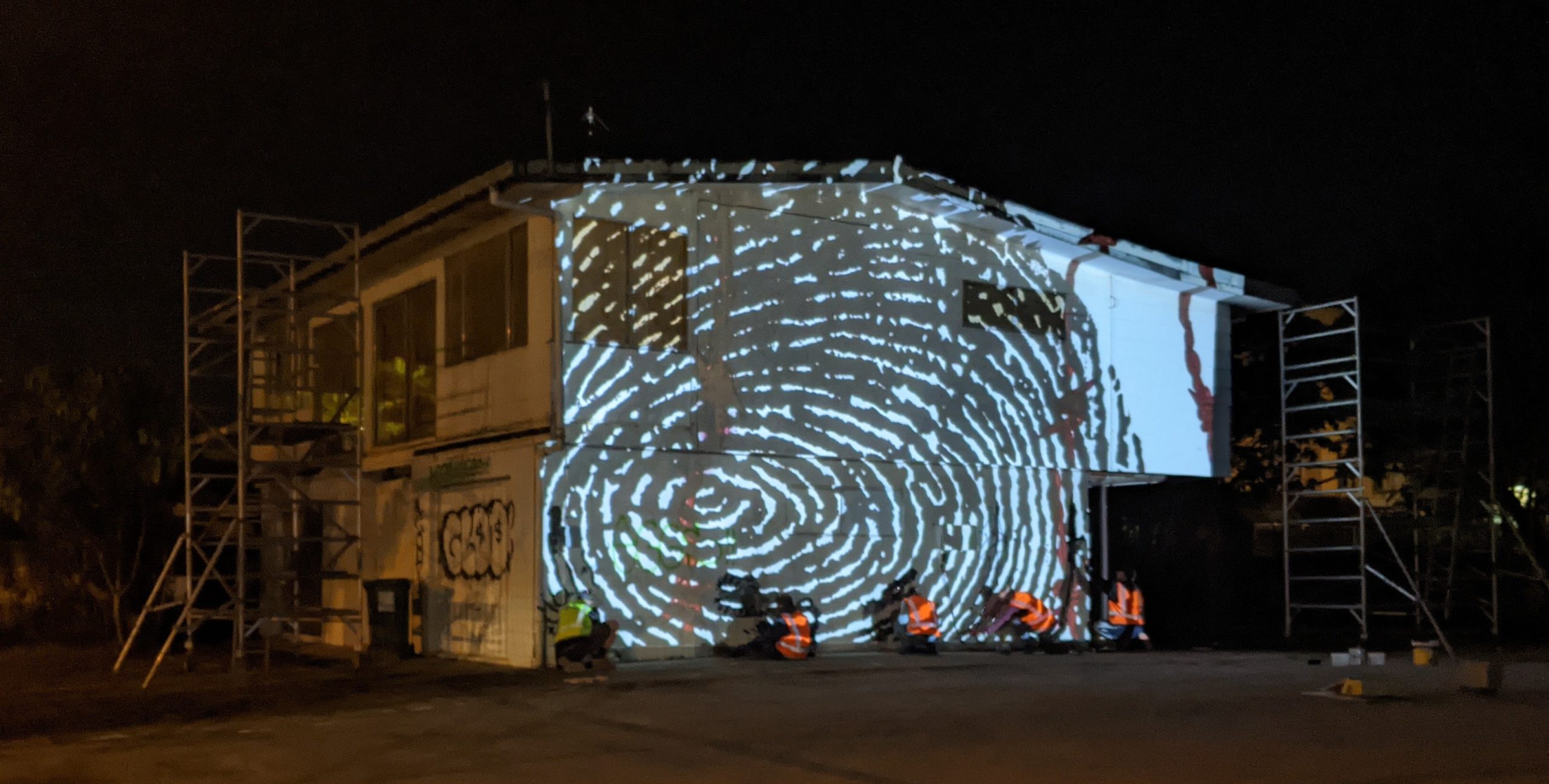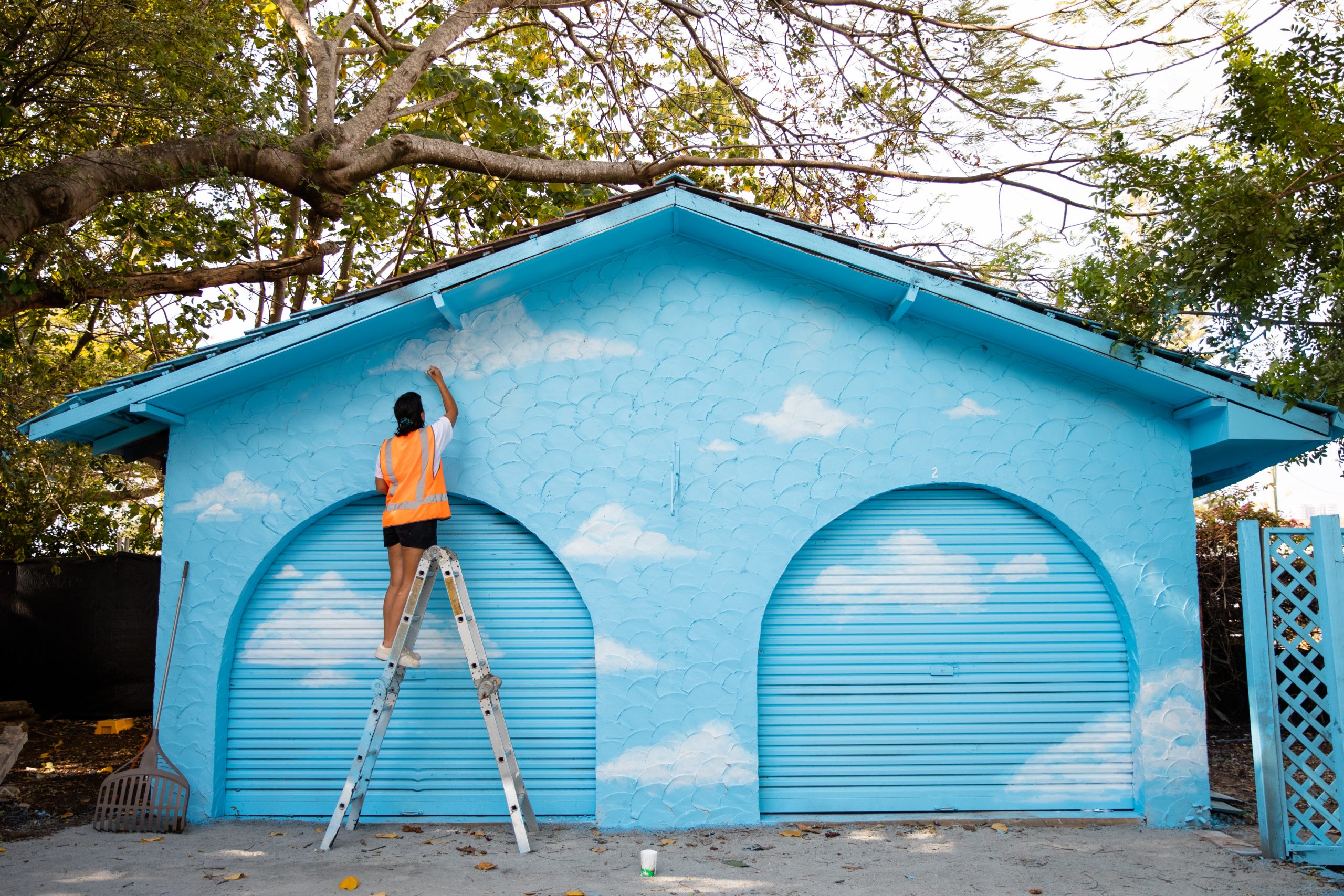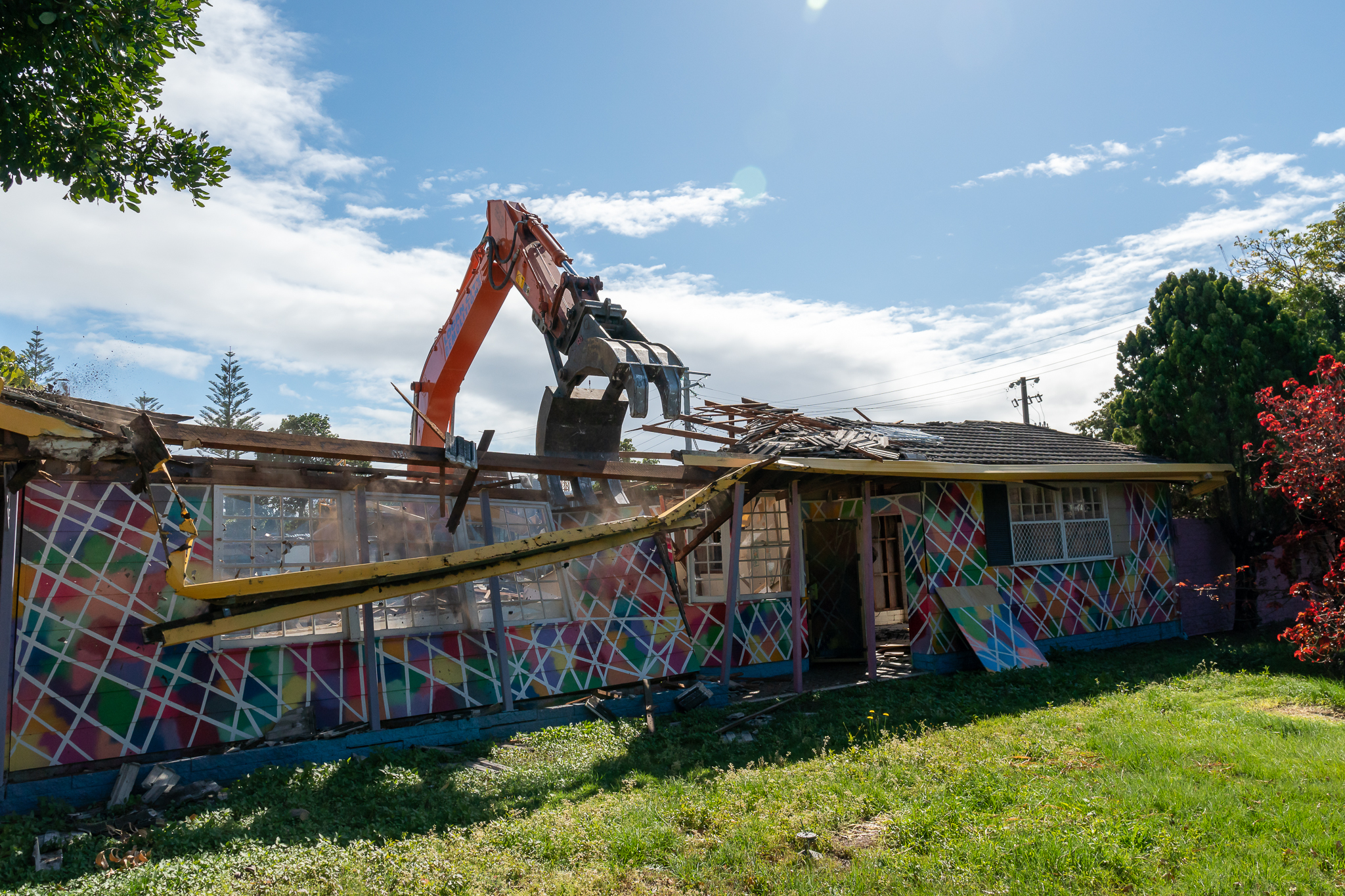We create place-led projects that enable community engagement, build genuine relationships, and seek to understand local communities by having authentic conversations. Our art-making process is a catalyst for invaluable and insightful community consultation.
Chez Nous on Chevron Island was created for Bleach* 2020 in an abandoned block of houses, slated for demolition, and transformed into a monumental public artwork and spectacular Festival site, responding to the local community and to the place.
The project’s dual purpose was to:
- Culturally activate the place and create a vibrant space for the Festival Club on Chevron Island
- Initiate conversation with local community through the onsite art-making process in the lead-up to and during the Festival.
Stage 1 – Policy Alignment
The process leading to the transformation of dilapidated houses to Chez Nous on Chevron was implemented over several stages.
In April 2019, Chevron Island was identified as a location for a festival hub given its strong alignment with the City of Gold Coast’s broader cultural strategy and vision. As a site, the location of the houses, was perfect, given their proximity to the pedestrian access point to HOTA (Home of the Arts) and the Chevron Island main retail strip.
Parallel to this, the retail strip was struggling to attract tenants, with many shops vacant and pedestrian traffic low.
Stage 2 – Creating Community
Placemakers* began building a relationship with the developer and initiated a grassroots, community engagement project called Blue Sky. Blue Sky is a low impact, high yield creative model with community engagement as a central focus. The model places artists in residence, simultaneously, to begin creating a new work connected to the place. This process provides a platform for local engagement, actively encourages conversation and wants to hear from the local community about their place and the stories of the place. It is a critical first step.
In the early stages of consultation, the overwhelming sentiment expressed by the community was the desire to cultivate and create a thriving village. No single art project can do that alone; however, a coordinated vision and strategy with key stakeholders including business, residents and the political leaders can, over time, create a change.
“The vision Placemakers* had to transform our properties into a festival hub was genius on many levels. We value the role arts and culture can actively play in urban transformation. The company did a terrific job at securing buy in from the local community, including residents, businesses and other key stakeholders and really put a spotlight on Chevron and the potential for it to be a thriving community and cultural hub. Rosie and the team were easy to work with and extremely professional.”
John Bowman | Director – Development & Project Management – CitiMark
Stage 3 – Site Transformation
Over the next 12 months the Placemakers* team worked to bring this vision to life, continuing to build and maintain the relationships with the local community and other stakeholders. Alongside this engagement process, we expanded the creative team.
An important step in the transformation of the Chevron Island houses was the engagement of visual artists Glennys Briggs, Rebecca Ross and Mint Art House Collective. Each were invited to consider the exterior of one of the three dilapidated houses as a canvas and create a large scale, 360-degree artwork that would connect with the place and also provide a strong cultural frame for the Festival Hub.

First Nations Gold Coast-based artist Glennys Briggs, a Taungwurrung–Yorta Yorta woman from Victoria, used her fingerprint as the basis for her work, DNA, enlarging it and wrapping it around the walls of the house to communicate the enduring presence and spirit of the Traditional Custodians – their DNA is embedded in the land.
Gold Coast artist Rebecca Ross used hand-cut adhesive vinyl sheeting and projections to create her work, Light House, a hyper-colour, dynamic explosion shining a light on the site, seeking to draw people to a place previously overlooked.

For their work, A Pleasant Place, Mint Art House reflected on the uncertain times and sought to create a place of calm, hope and clarity by painting the entire house sky blue with clouds. Mint also referenced local graffiti artist EGGS, who’d tagged the house several times, by incorporating a fried egg sculpture draped over the balcony.
Stage 4 – Public Engagement
Visibility was central to the success of the project; the artists and their work became the face of the project. The local community became the champions and advocates for the neighbourhood transformation. As Chez Nous on Chevron opened to the public during a festival, thousands of locals and visitors descended on the local area during the two weeks of the Festival. The flow-on effect for businesses was visible and the transformation of the houses became the catalyst for what else was needed to nurture the village vibe.
Stage 5 – Future
Chez Nous on Chevron houses remained for almost 12 months after the Festival. The art houses were a reprieve from the broken windows, overgrown landscape and peeling paint. The houses have since been demolished to make way for a new development and the village life of Chevron continues to evolve.
